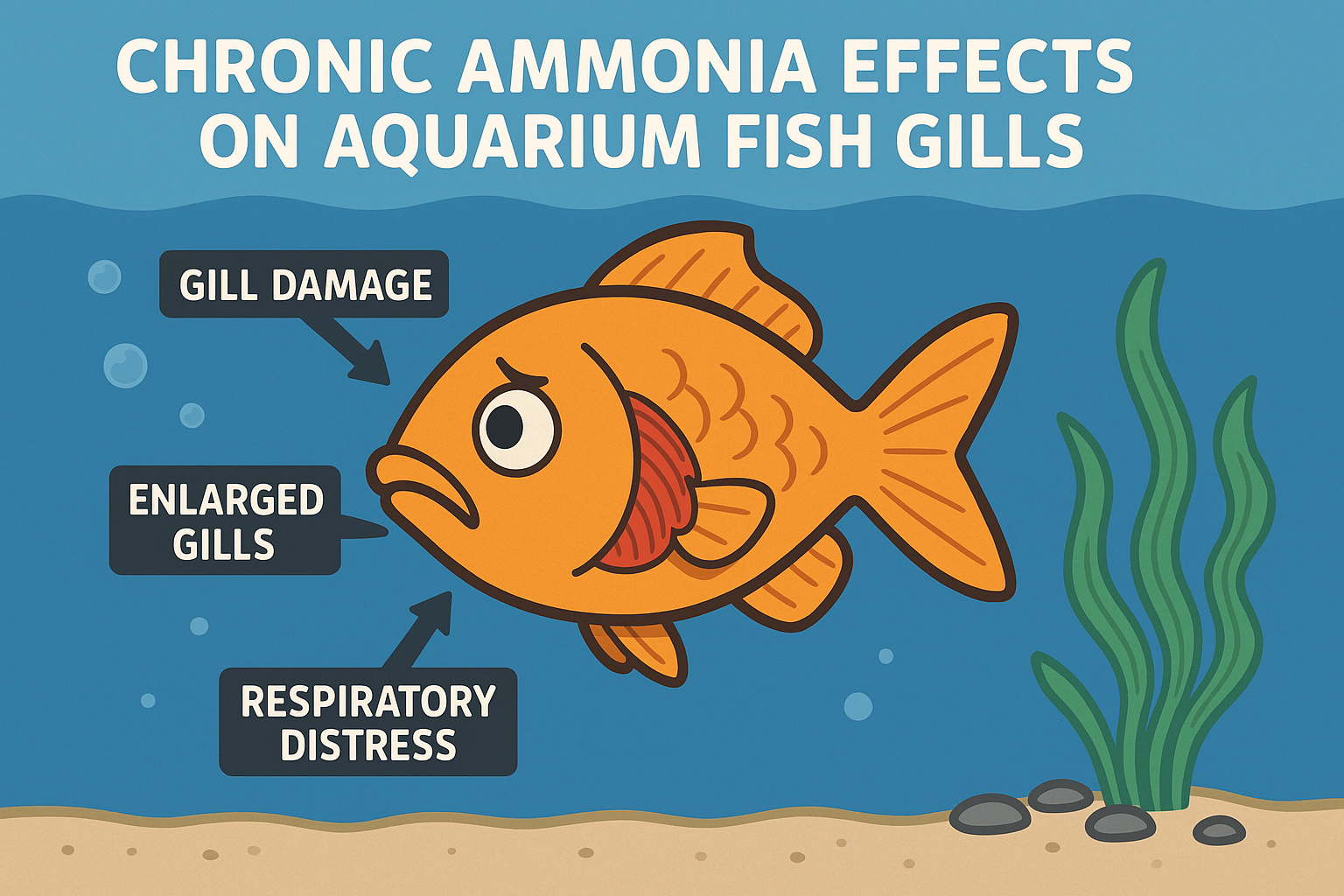Chronic Ammonia Effects on Aquarium Fish Gills
🫁 Chronic Ammonia Effects on Aquarium Fish Gills
🐟 Sensitive Aquarium Species (show damage quickly)
These fish have delicate gills and demand stable, clean water.
- Discus (Symphysodon spp.)
- 🧴 Excess mucus buildup → “milky gills.”
- 🧱 Rapid lamellar hyperplasia → less oxygen diffusion.
- ⚠️ Chronic ammonia is a common cause of their mysterious wasting and stress deaths.
- Dwarf cichlids (Apistogramma, Rams)
- 🩸 Very prone to vascular damage and gill thickening.
- 📉 Show stunted growth and lowered breeding success.
- Tetras & Rasboras
- 🧪 Thin epithelium → ammonia penetrates quickly.
- 🌀 Show clamped gills and increased ventilation rates.
- Catfish (Corydoras, some Loricariids like Zebra Plecos)
- 🧱 Develop fusion of lamellae quickly.
- 🫀 Reduced efficiency → appear lethargic and gasp near the surface.
🐠 Moderately Tolerant Aquarium Fish
These species survive ammonia better but still show long-term gill changes.
- Goldfish & Koi (Carassius auratus, Cyprinus carpio)
- 🧴 Produce huge amounts of mucus (often visible).
- 🧱 Chronic hyperplasia → permanently thickened gills.
- ⚠️ Leads to long-term stunting even if fish survive.
- Livebearers (Guppies, Mollies, Platies, Swordtails)
- 📉 Reduced growth and fertility over time.
- 🧬 Chronic exposure increases disease susceptibility.
- Cichlids (Oscars, African Cichlids)
- 🧱 Lamellar fusion and hypertrophy at prolonged exposure.
- ⚠️ Some species (e.g., mbuna) are hardy, but long-term exposure still shortens lifespan.
🐡 More Tolerant Aquarium Fish
Hardy species that mask damage until it’s advanced.
- Bettas (Betta splendens)
- 🫁 Can switch to air-breathing via labyrinth organ.
- 🧬 Still show mucus and hyperplasia in gills if exposed chronically.
- ⚠️ Appear fine but have reduced stamina and shorter lifespan.
- Gouramis (Labyrinth Fish)
- 🫁 Similar to bettas: survive ammonia better but still accumulate chronic gill damage.
⚙️ Universal Gill Effects in Aquarium Fish
No matter the species, chronic low-level ammonia exposure leads to:
- 🧱 Hyperplasia & lamellar fusion → less surface area.
- 🧴 Mucus overproduction → barrier to gas exchange.
- 💉 Capillary damage & reduced blood perfusion.
- 📉 Growth suppression, immune weakness, reproductive decline.
- 🕱 Reduced resilience to hypoxia, disease, and stress.
✅ Summary for Hobbyists:
- Sensitive species like discus, dwarf cichlids, and catfish show rapid gill damage under chronic ammonia.
- Hardy species like goldfish, livebearers, bettas, and gouramis may survive, but their gills still undergo permanent remodeling → leading to shorter lifespan, poor growth, and weakened immunity.
- In aquariums, any detectable ammonia (NH₃/NH₄⁺) over the long term = gill damage.

Powered by Lightspeed
Display prices in:USD